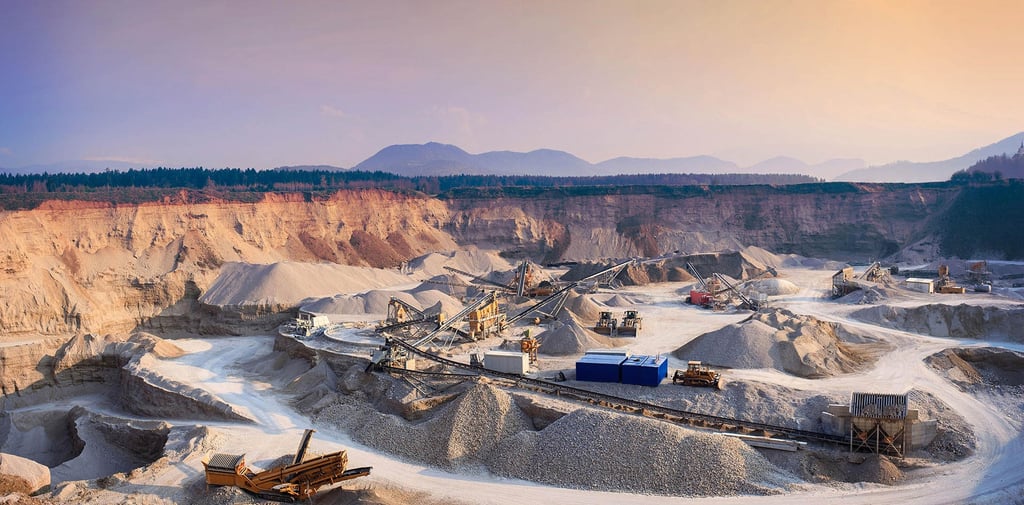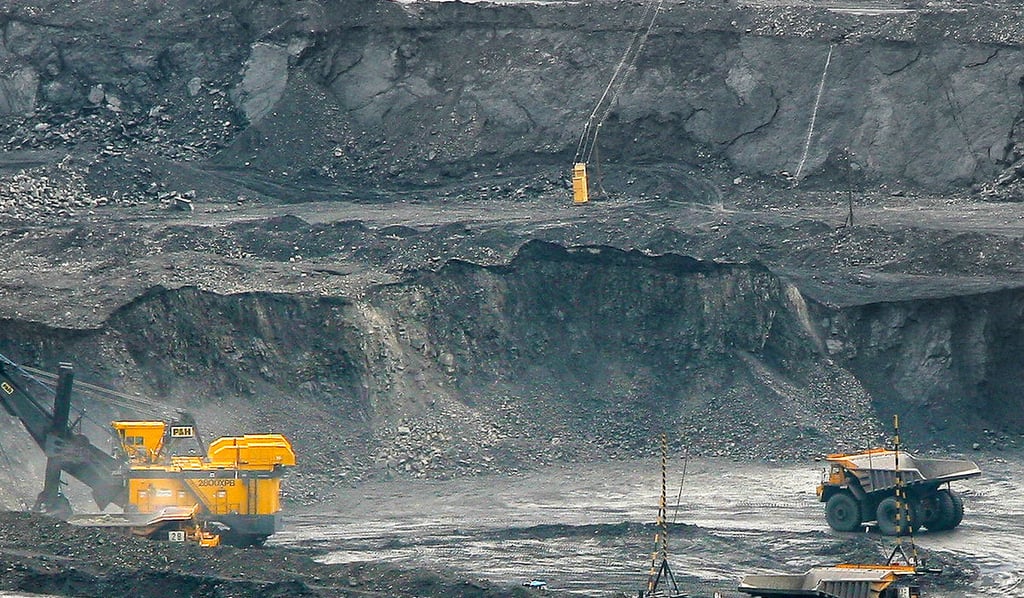Anhui Feichun Special Cable Co.,Ltd Li.wang@feichuncables.com
Cable Performance Requirements in South African Mining and Industrial Applications
Explore cable performance requirements for South Africa’s harsh mining and industrial environments, covering mechanical strength, fire resistance, UV protection, and SANS compliance. Learn solutions to common cable issues in gold, platinum, and coal mining.
Li.wang@Feichun Cable
7/2/20257 min read


Introduction
South Africa’s industrial and mining sectors are the backbone of its economy, contributing significantly to global supplies of gold, platinum, coal, and other minerals. From the deep-level mines of Gauteng to the open-pit coal operations in Mpumalanga, these industries operate in some of the most demanding environments on Earth. Reliable cable systems are critical to ensuring uninterrupted operations, worker safety, and equipment longevity in these mission-critical settings. Cables in South Africa must withstand extreme mechanical, environmental, and electrical stresses while adhering to strict regulatory standards like SANS 1520-1 and SANS 1411.
This article explores the performance expectations for cables used in South Africa’s harsh industrial and mining conditions. It covers key requirements, real-world applications, regulatory compliance, and solutions to common challenges. By understanding these factors, operators can select cables that enhance safety, efficiency, and durability in their operations.
Environmental and Operational Challenges in South Africa
South Africa’s diverse mining and industrial landscape presents unique challenges for cable systems. These environments range from deep underground tunnels to sun-exposed open-pit sites, each with specific stressors that cables must endure.
Harsh Underground Mines
Deep-level gold and platinum mines, such as those in the Witwatersrand Basin, operate at depths exceeding 3 kilometers. These environments feature high humidity, confined spaces, and abrasive surfaces like rock and ore. Cables are subject to constant mechanical stress from dragging, bending, and crushing, as well as exposure to water and chemical runoff.
Open-Pit Sites
Open-pit coal mines in Mpumalanga and diamond mines in the Northern Cape expose cables to intense ultraviolet (UV) radiation, temperature swings, and moisture from rain or dust suppression systems. Cables must resist cracking, fading, or degradation under prolonged sunlight and weathering.
Long Distances and Mobile Applications
Mining operations often span vast areas, requiring cables to cover long distances or support mobile equipment like draglines, shovels, and conveyor systems. These applications demand flexibility and durability to withstand repeated coiling, uncoiling, and movement over rough terrain.
Safety and Reliability
In high-risk sectors like mining, cable failures can lead to costly downtime, equipment damage, or safety hazards such as electrical fires or shocks. Ensuring reliability and compliance with safety standards is non-negotiable, particularly in gassy environments where sparks can trigger catastrophic explosions.
Key Cable Performance Requirements
To meet the demands of South African mining and industrial applications, cables must exhibit specific performance characteristics. Below are the critical requirements for cables in these environments.
Mechanical Strength & Flexibility
In trailing and reeling applications, such as those used with mobile mining equipment, cables endure constant bending, pulling, and crushing. Flexible conductors, typically made of finely stranded copper, are essential to maintain performance under repeated flexing. Tough outer sheaths, often made of chloroprene or nitrile butadiene rubber (NBR), provide resistance to abrasion and tearing. Reinforcement layers, such as steel braiding or synthetic fibers, enhance tensile strength to prevent stretching or breaking during dragging or reeling.
For example, Type 41 trailing cables, commonly used in South African mines, combine flexible conductors with robust sheathing to withstand the rigors of dragline or shovel operations.
Abrasion & Impact Resistance
Cables in mining environments are frequently dragged across rough surfaces like rock, coal, or metal machinery. This exposure causes wear and tear, potentially compromising insulation and conductors. Thick, rubberised sheaths made from materials like chloroprene or NBR offer superior abrasion resistance. These materials also provide cushioning against impacts from falling rocks or heavy equipment, ensuring the cable remains functional even in rugged conditions.
Fire Retardance & Flame Resistance
Underground mines, particularly coal mines, are prone to fire hazards due to flammable gases and dust. Cables must comply with SANS 1411-2 and IEC 60332-1 standards for flame resistance, ensuring they do not propagate fire or produce excessive smoke. Low-smoke, zero-halogen (LSZH) materials are often used to minimize toxic emissions in enclosed spaces, protecting workers and facilitating safe evacuation during emergencies.
Water & Moisture Resistance
Damp tunnels, sump areas, and flood-prone zones are common in South African mines. Cables must resist water ingress, which can degrade insulation and cause short circuits. Non-wicking fillers, sealed sheaths, and ethylene propylene rubber (EPR) insulation are critical for maintaining performance in wet conditions. EPR insulation, for instance, offers excellent water resistance and flexibility, making it ideal for submersible pump cables in flooded areas.
UV & Weather Resistance
In open-pit mines and rooftop installations, cables are exposed to intense UV radiation, ozone, and rain. Materials like cross-linked polyethylene (XLPE) or chloroprene resist UV degradation and cracking, ensuring long-term durability. Weather-resistant sheaths also protect against temperature fluctuations and moisture, which are common in South Africa’s variable climate.
Chemical & Oil Resistance
Cables in mining and industrial settings often encounter hydrocarbons, acids, and lubricants used in machinery or processing plants. Rubber-based sheaths, such as chloroprene or NBR, provide excellent resistance to chemical corrosion, preventing degradation and maintaining electrical integrity. This is particularly important in coal preparation plants or chemical processing facilities.
Thermal Stability
South Africa’s mining environments experience extreme temperature fluctuations, from –25°C in high-altitude regions to over 90°C in deep mines or near heavy machinery. Cables must maintain stable performance across this range. Materials like EPR and XLPE offer excellent thermal stability, ensuring consistent insulation and conductivity under sustained heat or cold.
Electrical Reliability
Cables must deliver consistent electrical performance to power critical equipment. High insulation resistance and dielectric strength are essential to prevent leakage or breakdowns, especially in systems operating at 640/1100V or 1900/3300V, which are common in South African mines. Proper shielding and earthing also reduce electromagnetic interference, ensuring reliable operation of sensitive control systems.
Regulatory and Testing Standards
South Africa has stringent regulatory frameworks to ensure cable safety and performance in mining and industrial applications. The South African National Standards (SANS) govern cable manufacturing and testing, with key standards including:
SANS 1520-1: Specifies requirements for flexible cables used in mining, including trailing cables for mobile equipment.
SANS 1507: Covers electric cables with extruded solid insulation for fixed installations.
SANS 1411-2: Defines fire performance requirements, including flame propagation and smoke emission tests.
IEC 60332-1: An international standard for flame resistance, widely adopted in South Africa.
The National Regulator for Compulsory Specifications (NRCS) and the South African Bureau of Standards (SABS) oversee compliance through rigorous testing. Cables must undergo mechanical, electrical, and environmental tests to ensure they meet safety and performance criteria. Non-compliant cables risk rejection, posing safety hazards and legal consequences for operators.
Application Scenarios
Cables in South Africa serve a wide range of mining and industrial applications, each with unique demands.
Deep-Level Gold and Platinum Mines
In deep-level mines, trailing cables power drills, pumps, and ventilation systems. These cables must withstand high mechanical stress, water exposure, and confined spaces while maintaining electrical reliability. Type 61 cables, with their robust sheathing and flexible conductors, are commonly used for these applications.
Coal Mining (Mpumalanga)
Coal mines, particularly in Mpumalanga, rely on cables for conveyor systems, draglines, and lighting circuits. Open-pit operations require UV-resistant and weatherproof cables, while underground coal mines prioritize fire-retardant and low-smoke cables to mitigate explosion risks.
Mobile Industrial Machinery
Mobile equipment like excavators and haul trucks uses trailing cables that endure constant movement and abrasion. These cables must be flexible yet durable, with reinforcement to handle tensile forces.
Temporary Power Distribution Systems
Temporary setups for exploration or maintenance require portable, weather-resistant cables that can be quickly deployed and retrieved. These systems often use Type 41 cables for their flexibility and durability.
Special Use Cases
Pump Cables: Submersible pumps in flooded tunnels require water-resistant cables with EPR insulation.
Lighting Circuits: Underground lighting systems need flame-retardant cables to ensure safety in confined spaces.
Conveyor Systems: Long-distance conveyors in coal mines use cables with high tensile strength and abrasion resistance.
Common Challenges and Solutions (FAQ)
Below are frequently asked questions about cable performance in South African mining and industrial applications, along with practical solutions.
Q1: Why do cables fail in underground mines?
Issue: Sheath damage from abrasion, insulation breakdown from water ingress, or conductor fatigue from repeated bending.
Solution: Select cables with robust sheaths (e.g., chloroprene or NBR), non-wicking fillers, and flexible conductors. Schedule regular inspections to detect early wear and ensure proper termination techniques to prevent water ingress.
Q2: How can I prevent fire hazards from cables in gassy environments?
Issue: Non-compliant cables may propagate flames or emit toxic smoke in enclosed, gassy mines.
Solution: Use SANS 1411-2 and IEC 60332-1 compliant cables with low-smoke, zero-halogen materials. Regularly test cables for flame resistance and ensure proper installation to avoid short circuits.
Q3: What causes cable degradation in open-pit mines?
Issue: UV radiation, rain, and temperature swings cause cracking or fading of cable sheaths.
Solution: Choose UV-resistant materials like XLPE or chloroprene. Ensure cables are rated for the site’s temperature range and protected from prolonged water exposure.
Q4: How do I select the right cable for my operation?
Issue: Incorrect cable types lead to premature failure or safety risks.
Solution: Consult SANS standards and match cable specifications to the application. For example, use Type 41 cables for trailing applications and Type 61 for fixed installations in wet environments. Work with certified suppliers to ensure compliance.
Q5: Why do cables fail in mobile equipment applications?
Issue: Excessive bending or pulling causes conductor fatigue or sheath tearing.
Solution: Use cables with finely stranded conductors and reinforcement layers. Implement proper cable management systems, such as reeling mechanisms, to reduce stress during movement.
Q6: How can I ensure long-term reliability in harsh conditions?
Issue: Environmental stressors reduce cable lifespan.
Solution: Conduct routine maintenance, including visual inspections and electrical testing. Store cables properly when not in use to prevent UV or moisture damage. Use professional termination and jointing techniques to maintain integrity.
Conclusion
In South Africa’s demanding mining and industrial sectors, cable performance is a critical factor in ensuring safety, efficiency, and operational continuity. From deep-level gold mines to open-pit coal operations, cables must withstand mechanical stress, environmental extremes, and electrical demands while complying with SANS and IEC standards. By selecting high-quality, compliant cables and implementing proper maintenance strategies, operators can mitigate common challenges like sheath damage, water ingress, and insulation breakdown.
For project-specific needs, consult with certified suppliers or electrical engineers to ensure the right cable selection. Investing in durable, SANS-compliant cables not only enhances safety but also reduces downtime and maintenance costs, supporting South Africa’s vital mining and industrial operations.



Email Address: Li.wang@feichuncables.com
© 2025. All rights reserved.


One-click to Quickly Contact
Products
Offshore & Marine Cable
XLPE Cable
Contact
Company
Location:
Building A Private Science and Technology Park, Hefei Economic and Technological Development Zone, Anhui Province, China
